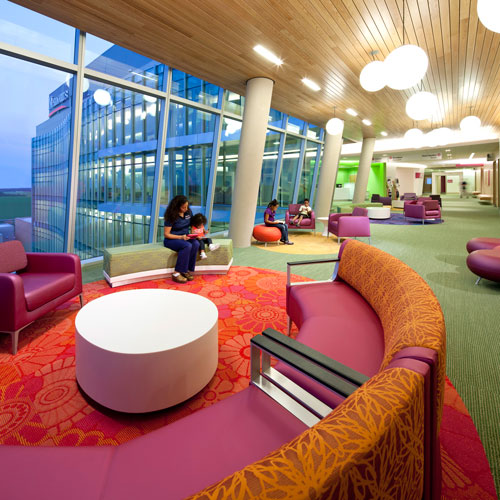Construction is underway in North Dakota on a truly unique development that will include both a business park and aviation infrastructure.
The community-driven project, known as Grand Sky, brings together businesses, local government, the military, and universities in an effort to revitalize the community and foster innovation through drone technology.
Grand Sky Development Co. celebrated the groundbreaking of the 217-acre project in September 2015 and by October, already was on pace to complete infrastructure work by January 2016.

The idea for Grand Sky was born out of discussions on how the community could better invest in the Grand Forks Air Force Base to replace the economic impact lost by its tanker missions leaving, according to Tom Swoyer Jr., president of Grand Sky Development Co.
“The unmanned industry came up because the military had started to fly unmanned aircraft from Grand Forks Air Force Base,” Swoyer says. “Taking that as a cue, the community led an effort to sponsor the concept of the business park.”
The Air Force agreed to lease a portion of its base to Grand Forks County for 50 years. The county is subleasing it to the development company. While the majority of the project will be privately funded, the state of North Dakota has so far invested $13 million for infrastructure improvements. Total project cost is slated for $300 million.
Once complete, the park is expected to offer 1.2 million square feet of build-to-suit space for use as data centers, hangars, laboratories, offices, and shops. Tenants will have access to the base’s runway through a specialized 175-foot mechanical gate controlled by the Air Force.
The project will be completed in phases. As of October 2015, the company expected the first phase, consisting of seven lots, to be complete in early 2016. Total buildout will contain about 24 lots. Roughly 123 of the 217 acres are developable. Crews are working around wetlands to avoid filling them in, according to Brad Gerken, principal at Grand Sky Development Co.
It should take about 10 years to fully lease the park, which is projected to create or support a total of 3,000 direct and indirect jobs by 2025. About 1,000 people are expected to work on the property on a daily basis, with another 1,000 coming on the park for training or support roles each year. The project should support another 1,000 indirect jobs around the community, Swoyer says.
By the Numbers
217 acres included in the development
1.2 million sq. ft. of space available for lease
$8 million infrastructure costs, including sewer, water, electric, fiber optics, roads, drainage, and security
$300 million total projected cost
10 years anticipated to fully lease Grand Sky
3,000 direct and indirect jobs expected to be created or supported when park is complete in 2026
9 states designated by the Federal Aviation Administration as a UAS test site
$82 billion total anticipated economic impact of UAS industry in 2026
Northrop Grumman was among the first employers to join the project. The unmanned aerial system (UAS) manufacturer and global security company broke ground in October on a $10 million, 36,000-square-foot facility for UAS research and training. About 100 employees are expected to work at the facility once it’s complete in 2016.
Defense contractor General Atomics also has signed a lease. Many tenants are expected to be private companies and government contractors, which have clients right across the fence at the base. The park also will accommodate companies that research and support UAS manufacturers.
Grand Sky is a testament to the community’s commitment to reaching the forefront of the unmanned systems industry. Several North Dakota community colleges and universities are involved in research, and the state of North Dakota has made significant investments in the industry.
“It’s not just the physical land and the buildings that are important for Grand Sky, it’s being part of a broader ecosystem, a broader team in North Dakota that makes it work,” Swoyer says.
The Air Force also has been very supportive in assisting developers with engineering, security and other construction issues, Gerken says. The park is now segregated from the base with a fence, but during construction, the Air Force allowed contractors to access the site through the base.
Grand Sky plans to incorporate drones in the construction process by using them to take photos and videos of progress as well as mapping out the site.
“We’re going to test some of those processes out, because that’s all new to the industry,” Gerken says. “It’s not something that’s well defined or well thought out yet.”
A lot of uses for unmanned systems are only on the cusp of being developed, such as providing wireless Internet service to developing countries from the air, Swoyer says. It’s an incredible opportunity, but one that needs larger UAS to be successful.
“To do that, you need a place where there’s infrastructure sufficient to support that kind of an aircraft,” Swoyer says. “It needs a long runway to take off, it needs a lot of support facilities, hangars and shops and all matter of people working to keep those aircraft operational and keep them up in the air.
“So Grand Sky is built with that sort of end use in mind. But in the near term, there are lots of small aircraft needs. We need to be able to launch and recover small and mid-size unmanned systems to do agricultural research and energy research, to work with transportation and logistics. Law enforcement is another great opportunity.”
The number one impact, he says, will be the acceleration of the use of commercial unmanned systems in the United States.


